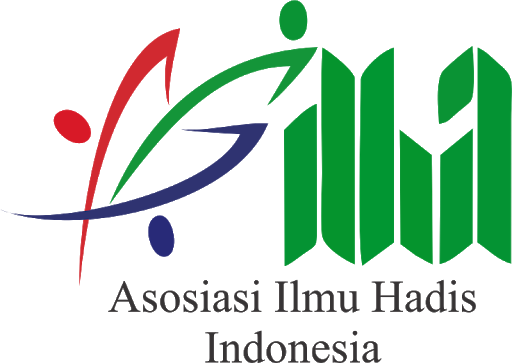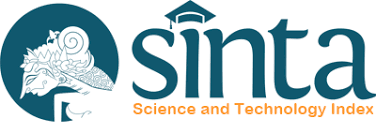Study of Living Hadith Towards Kubro Siswo Arts as Islamic Syi'ar
DOI:
https://doi.org/10.14421/livinghadis.2021.3216Keywords:
Art, Kubro Siswo, Phenomenological, Da’wah, al-Qur’an and HadithAbstract
Art is a medium of da'wah that grows and develops until now. Islam brought by the guardians to the archipelago has a basis on symbols, including symbols in art. If art is explored more deeply, it will be understood things that are closely related to religious texts. Kubro Siswo is the art of dance accompanied by music and syi'ir-syi'ir that contains advice. This art is not only limited to spectacle, but also demands that are conveyed through the syi'ir-syi'ir. Kubro Siswo is usually displayed in big events, such as the month of independence, Isra 'Mi'raj, and other events. The phenomenon of Kubro Siswo's art becomes very interesting to study. Based on the phenomenological theory, it will appear that this art has a considerable impact on the life of the Magelang community. This art not only functions as a spectacle that teaches love for ancestral traditions, but also as a means of da'wah that always invites people to cultural values that are in line with Islamic law. Every poem sung in Kubro Siswo's art has a deep meaning, which contains an invitation to goodness that is indirectly sourced from the Qur'an and Hadith.
 Abstract viewed: 477 times
|
Abstract viewed: 477 times
|
 PDF downloaded = 646 times
PDF downloaded = 646 times
References
Abu Dawud. (t.t). Sunan Abī Dāwud. Dar al-Kitab al-Arabi.
Aji, A. B. (2016). Pengaturan Dana Desa Menurut Undang-Undang Nomor 6 Tahun 2014 Dan Peraturan Pemerintah Nomor 22 Tahun 2015 Di Desa Ambartawang, Kecamatan Mungkid, Kabupaten Magelang [Seminar].
al-Bukhari, A. A. M. bin I. (t.t.). Shahih Bukhari.
al-Khurasānī, A. ‘Abd al-R. A. bin ‘Alī ibn S. ibn ‘Alī ibn S. ibn B. (1991). Sunan al-Nasa’ī al-Kubrā (‘Abd al-Ghaffār Sulaymān al-Bandārī, Ed.). Dār al-Kitab al-‘Ilmiyyah.
Al-Qazwaini. (1313). Sunan Ibn Majah. Mauqi’ Wizarat al-Auqaf al Mishriyyah.
Amir. (2021, Maret 24). Wawancara dengan Pendiri Kobrosiswo.
Cresswel, J. W. (2015). Penelitian Kualitatif dan Desain Riset: Memilih di Antara Lima Pendekatan (Ahmad Lintang Lazuardi, Penerj.). Pustaka Pelajar.
Hariwijaya, M. (2007). Metodologi Teknik Penulisan Skripsi, Tesis, dan Disertasi. Almatera Publishing.
Hasan, N. (2018). Persentuhan Islam dan Budaya Lokal (Mengurai Khazanah Tradisi Masyarakat Popular). Duta Media.
Irianto, A. M. (2017). Kesenian Kubro Siswo, Wahana Dakwah Petani Pedesaan. Jurnal Nusa, 12(2).
Kholil, A. (2008). Islam Jawa: Sufisme dalam Tradisi dan Etika Jawa. UIN Maliki Press.
Kholis, N. (2018). Syi’ar melalui Syair (Eksistensi Kesenian Tradisional sebagai Media Dakwah di Era Budaya Populer). Al-Balagh: Jurnal Dakwah dan Komunikasi, 3(1).
Littlejon, S. W., & Foss, K. A. (2009). Teori Komunikasi; Theories Of Human Communication (9 ed.). Salemba Humanika.
Muslim. (1334). Ṣaḥīḥ Muslim. Dar al-Afaq al-Jadidah.
Pratiwi, I. (2016). Eksistensi Kubro Siswo, Pendidikan Seni Tari Tradisional berbasis Kearifan Lokal yang Potensial di Sekolah Dasar Magelang, Jawa Tengah. Journal of Chemical Information and Modeling.
Puput, P. (2014). Kontribusi Seni Tari Kubro Siswo dalam Pendidikan Karakter. Seminar Nasional Evaluasi Pendidikan, Semarang.
Qudsy, S. Z. (2016). Living hadis: Genealogi, Teori dan Aplikasi. Jurnal Living Hadis, 1(1).
Raiz, I. J., & Bisri, Moh. H. (2018). Bentuk Pertunjukan Tari Kubro Siswo Arjuno Mudho Desa Growong Kecamatan Tempuran Kabupaten Magelang. Jurnal Seni Tari, 7(1).
Subqi, I. & Sutrisno. (2018). Islam dan Budaya Jawa (1 ed.). Penerbit Taujih.
Sunabdiyo, H. (2005). Sosiologi Tari. Pustaka.
Wahyu, D. (2021, Maret 21). Wawancara tentang pelaksanaan Kobrosiswo.
Zamroni. (2021, Maret 23). Wawancara Tentang Sejarah Kobrosiswo di Desa Ambartawang.
Downloads
Published
Issue
Section
License
- Authors who publish with this journal agree to the following terms:
- Authors retain copyright and grant the journal right of first publication with the work simultaneously licensed under a Creative Commons Attribution License that allows others to share the work with an acknowledgement of the work's authorship and initial publication in this journal.
- Authors are able to enter into separate, additional contractual arrangements for the non-exclusive distribution of the journal's published version of the work (e.g., post it to an institutional repository or publish it in a book), with an acknowledgement of its initial publication in this journal.
- Authors are permitted and encouraged to post their work online (e.g., in institutional repositories or on their website) prior to and during the submission process, as it can lead to productive exchanges, as well as earlier and greater citation of published work.
















